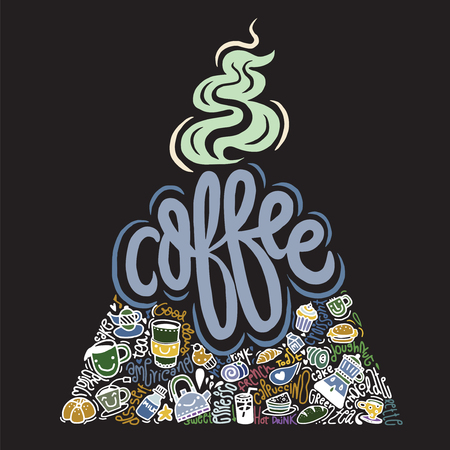Understanding Fair Trade Coffee
Fair trade coffee is more than just a label—it represents a movement that supports better prices, decent working conditions, and fair terms of trade for farmers and workers in developing countries. When you buy fair trade coffee, youre not only enjoying a cup of quality beans, but also helping build a more ethical and sustainable coffee industry.
What Is Fair Trade Coffee?
Fair trade coffee refers to coffee that has been certified to meet specific social, environmental, and economic standards. These standards ensure that farmers receive a fair price for their beans and work under safe conditions. The goal is to empower small-scale producers and promote long-term sustainability.
Key Principles Behind Fair Trade Coffee
- Fair Prices: Farmers receive a minimum price that covers the cost of sustainable production.
- Direct Trade: Middlemen are reduced or eliminated, allowing farmers to earn more.
- Community Development: A portion of profits goes back into local projects like schools or healthcare.
- Environmental Protection: Encourages eco-friendly farming practices such as shade-growing and organic methods.
- No Exploitation: Prohibits child labor and forced labor.
Fair Trade vs. Conventional Coffee
The difference between fair trade and conventional coffee mainly lies in how it’s sourced and how much control farmers have over their product. Heres a quick comparison:
| Aspect | Fair Trade Coffee | Conventional Coffee |
|---|---|---|
| Price Paid to Farmers | Guaranteed minimum price + premium | Subject to market fluctuations |
| Sourcing Method | Direct or cooperative-based | Often through multiple intermediaries |
| Labor Standards | No child or forced labor; safe working conditions | Lack of oversight; possible exploitation |
| Environmental Practices | Sustainable farming encouraged | May involve harmful pesticides or deforestation |
| Community Impact | Invests in local development projects | No guaranteed community support |
The Bigger Picture
Choosing fair trade coffee isn’t just about whats in your mug—its about making a conscious decision to support ethical sourcing, sustainability, and the livelihoods of farmers around the world. As consumers become more aware of where their food comes from, fair trade offers a way to align values with purchasing habits.
This understanding lays the foundation for exploring other important aspects of fair trade coffee in the next sections.
2. The Journey from Farm to Cup
Ever wonder how your morning cup of fair trade coffee ends up in your favorite mug? The process is more than just beans and brewing—it’s a global journey that involves hard work, ethical practices, and a commitment to fairness at every step. Let’s walk through the fair trade coffee supply chain, from the farm all the way to your local café.
Farming: Where It All Begins
Fair trade coffee starts with small-scale farmers, often located in countries like Colombia, Ethiopia, or Guatemala. These farmers typically belong to cooperatives—groups that allow them to pool resources, share knowledge, and gain better access to markets. Fair trade certification ensures these farmers receive a minimum price for their beans, helping protect them from market crashes and providing a stable income.
Cooperatives: Strength in Numbers
Cooperatives play a big role in the fair trade model. They handle tasks such as quality control, processing (like washing and drying beans), and organizing shipments. Members vote on how to use the additional premiums earned through fair trade sales—often investing in community projects like clean water systems or schools.
Importers: Bringing Beans Across Borders
Once the green coffee beans are processed and packaged, they’re sold to certified fair trade importers. These importers commit to long-term relationships with cooperatives and often provide pre-financing so farmers can cover their costs during the growing season. Importers also ensure that all fair trade standards are met throughout shipping and documentation.
Roasters: Turning Green Beans into Gold
Next stop: roasters. These businesses buy green beans from importers and roast them to perfection. Roasting is both an art and a science—done right, it brings out unique flavor profiles based on origin, bean variety, and processing methods. Fair trade roasters tend to be transparent about sourcing and may even build direct relationships with farming communities.
Coffee Roasting Levels
| Roast Level | Description | Flavor Profile |
|---|---|---|
| Light Roast | Minimal roasting time | Bright acidity, fruity notes |
| Medium Roast | Balanced roast time | Smooth body, chocolatey tones |
| Dark Roast | Longer roast time | Bitter-sweet flavors, smoky finish |
Your Local Café: The Final Destination
The last step is where you come in—your local café or grocery store. When you buy a cup of fair trade coffee or bring home a bag of beans with that familiar label, you’re supporting an entire network of people dedicated to ethical sourcing and sustainable farming. Many cafés now proudly display information about where their coffee comes from and how it was sourced—so don’t hesitate to ask!
A Quick Look at the Fair Trade Coffee Supply Chain
| Stage | Main Role |
|---|---|
| Farmers & Cooperatives | Grow and process coffee; receive fair pricing and community benefits |
| Importers | Purchase green beans; ensure fair trade compliance; provide financing support |
| Roasters | Roast beans; highlight flavor profiles; promote transparency |
| Cafés/Retailers | Sell brewed coffee or packaged beans; educate customers about sourcing |
The next time you sip on your favorite brew, remember—it’s not just coffee. It’s a story of people working together across continents to make things better for everyone involved.

3. Why Fair Trade Matters to Farmers
Fair trade coffee isnt just about sipping a better brew—its about supporting the hardworking farmers who grow the beans. For many small-scale coffee farmers in Latin America, Africa, and Asia, fair trade creates real change by offering better wages, safer working conditions, and stronger local communities. Heres how it makes a difference:
Economic Benefits: Earning a Livable Income
One of the biggest challenges for coffee farmers is the unpredictability of market prices. Fair trade helps solve this by guaranteeing a minimum price per pound of coffee. This ensures that farmers can cover basic costs, even when global prices drop.
| Benefit | Fair Trade Impact |
|---|---|
| Minimum Price Guarantee | Protects farmers from market crashes |
| Fair Trade Premium | Extra money invested back into farms and communities |
| Direct Trade Relationships | Cuts out middlemen and increases profits |
Social Benefits: Building Stronger Communities
Fair trade isn’t just about money—it’s also about people. When farmers earn more, they can invest in their families and neighborhoods. Many co-ops use fair trade premiums to build schools, improve healthcare access, or install clean water systems.
Real-Life Examples:
- A co-op in Peru used its premium to build a community health center.
- Coffee growers in Ethiopia funded educational programs for children.
- A farming group in Honduras developed eco-friendly waste systems with fair trade funds.
Safer Working Conditions and Labor Rights
Fair trade standards go beyond pay—they also protect workers rights. Child labor is prohibited, workplaces must be safe, and employees are treated with respect. These protections create a healthier and more secure environment for everyone involved in production.
Key Worker Protections Under Fair Trade:
- No child or forced labor allowed
- Safe equipment and training provided
- Right to organize and join cooperatives respected
By choosing fair trade coffee, youre helping ensure that every cup supports dignity, fairness, and opportunity for farmers around the world.
4. The Environmental Impact of Fair Trade Coffee
When we talk about fair trade coffee, most people immediately think about better wages and working conditions for farmers. But there’s another major benefit that often gets overlooked—its positive impact on the environment. Fair trade isnt just good for people; its also good for the planet. Lets dive into how fair trade practices support sustainability through eco-friendly farming methods and environmental standards.
Eco-Friendly Standards in Fair Trade
One of the key principles of fair trade certification is environmental protection. Farmers who participate in fair trade programs must follow specific guidelines that reduce harm to the environment. These standards are designed to protect soil health, water sources, and local biodiversity while promoting long-term sustainability.
Here are a few key environmental requirements:
| Practice | Description |
|---|---|
| Ban on Harmful Chemicals | Farmers avoid using dangerous pesticides and herbicides, reducing pollution and protecting wildlife. |
| Soil and Water Conservation | Techniques like composting, crop rotation, and rainwater harvesting help preserve natural resources. |
| Waste Management | Producers are encouraged to recycle and reduce waste wherever possible. |
| Biodiversity Protection | Farms maintain or restore natural habitats to support local ecosystems. |
The Role of Organic Farming
Many fair trade coffee producers also grow their beans organically. While not all fair trade coffee is certified organic, the two often go hand-in-hand because both prioritize sustainable agricultural practices. Organic farming avoids synthetic chemicals, promotes healthier soil, and encourages the use of natural fertilizers like compost and manure.
Benefits of Organic Fair Trade Coffee:
- Healthier Soil: Natural methods improve soil fertility over time.
- Cleaner Water: Without chemical runoff, nearby water sources stay cleaner.
- Better for Wildlife: Fewer chemicals mean safer habitats for birds, insects, and other animals.
Sustainable Cultivation Methods
Fair trade farmers are trained in sustainable agriculture techniques that allow them to grow high-quality coffee without depleting the land. Shade-grown coffee is one great example. This method involves growing coffee under a canopy of trees, which mimics the natural forest environment.
Why Shade-Grown Coffee Matters:
- Cools the Climate: Trees provide shade that helps regulate temperature and moisture levels.
- Supports Biodiversity: Tree canopies offer habitats for birds and insects that naturally control pests.
- Reduces Deforestation: Encourages keeping forests intact rather than clearing land for crops.
The next time you enjoy a cup of fair trade coffee, remember it’s not only supporting farmers—it’s also helping create a healthier planet. From eco-conscious farming methods to strict environmental standards, fair trade plays an important role in protecting our environment while bringing us better coffee.
5. How to Identify and Support Fair Trade Coffee
Shopping for fair trade coffee in the U.S. can be easy once you know what to look for. Whether youre browsing your local grocery store, grabbing a cup at your favorite café, or shopping online, here’s how you can make sure your coffee choices support ethical and sustainable practices.
Look for Fair Trade Certification Labels
The simplest way to identify fair trade coffee is by checking the packaging for certification logos. These labels indicate that the coffee meets specific social, environmental, and economic standards.
Common Fair Trade Labels in the U.S.
| Label | Description |
|---|---|
| Fair Trade Certified™ (by Fair Trade USA) | This is one of the most recognized labels in the U.S. It ensures fair wages, safe working conditions, and environmental protection. |
| Fairtrade International (FLO) | This global label ensures farmers receive minimum prices and premiums for community development. |
| Rainforest Alliance | While not strictly fair trade, this label focuses on sustainable farming and may overlap with fair trade principles. |
Understand What the Labels Mean
Not all ethical labels are created equal. Heres a quick guide to help you understand what each one emphasizes:
- Fair Trade Certified™: Emphasizes fair labor practices, direct trade, and community investment.
- Fairtrade International: Focuses on long-term contracts and stable pricing for producers.
- Rainforest Alliance: Prioritizes environmental conservation and biodiversity along with social responsibility.
If youre unsure about a label, visit the certifiers website to learn more about their standards and how they support farmers.
Where to Buy Fair Trade Coffee
You can find fair trade coffee in a variety of locations across the U.S. Here’s where to look:
- Mainstream Grocery Stores: Many large chains like Whole Foods, Kroger, and Target carry fair trade certified brands such as Equal Exchange, Allegro Coffee, and Peace Coffee.
- Cafés: Independent cafés often highlight their commitment to ethical sourcing. Ask your barista if their beans are fair trade certified or directly traded from sustainable farms.
- Online Retailers: Websites like Amazon, Thrive Market, or specialty roasters own sites offer a wide selection of certified products with detailed sourcing info.
Tips for Making Ethical Coffee Choices
- Read the fine print: Look beyond buzzwords like “organic” or “sustainable.” These don’t always mean fair trade.
- Avoid vague claims: Terms like “ethically sourced” can be unregulated. Stick with certifications that have clear standards.
- Brew at home: Buying whole beans or ground fair trade coffee lets you control quality while supporting ethical sources daily.
The more informed you are as a consumer, the more power you have to support farming communities around the world. By recognizing trusted labels and choosing responsible brands, youre helping create a better future—one cup at a time.
6. Criticisms and Challenges of Fair Trade
While fair trade coffee offers many benefits for farmers, communities, and conscious consumers, its not without its challenges. To understand the full picture, it’s important to take a look at some of the criticisms and limitations of the system. These issues can affect how effective fair trade really is in achieving its goals.
Certification Fees: A Barrier for Small Farmers
One major concern is the cost of becoming fair trade certified. For small-scale farmers or cooperatives, these certification fees can be quite high. Not only do they have to pay for initial certification, but they also face ongoing costs to maintain their status. This can make it difficult for truly small producers—those who might benefit most from fair trade—to participate in the system.
Common Certification Costs
| Type of Fee | Description |
|---|---|
| Initial Certification | A one-time fee paid when first applying for fair trade status |
| Annual Renewal | Yearly payment to keep certification active |
| Inspection Fees | Covers visits from auditors to verify compliance |
Scalability: Can It Grow Without Losing Its Purpose?
Fair trade was originally designed with small farms and community-based cooperatives in mind. As demand for ethical products grows, larger farms and corporate players have entered the space. This raises concerns about whether fair trade can scale up while still staying true to its original mission of supporting marginalized farmers.
Some critics argue that as big businesses get involved, they may push smaller producers out of the market or influence standards to fit their own needs. This could dilute the impact of fair trade and shift focus away from those who need it most.
Impact: Does It Really Make a Difference?
Although fair trade promises better wages and living conditions for farmers, studies have shown mixed results. In some cases, the extra money earned through fair trade doesnt always reach individual farmers directly. Instead, it may go toward community projects or administrative costs within cooperatives.
This has led some experts to question whether the model delivers on its promise of economic empowerment. Others point out that while its not perfect, it still represents a step in the right direction compared to traditional commodity trading systems.
Key Concerns About Impact
- Inequitable distribution: Not all farmers see direct financial benefits.
- Lack of transparency: Its sometimes unclear where funds are going.
- Limited market access: Only a portion of crops may be sold at fair trade prices.
Understanding these challenges helps paint a more complete picture of what fair trade coffee means today. While its an important movement with strong values behind it, there’s still room for improvement to ensure fairness and sustainability across the board.


